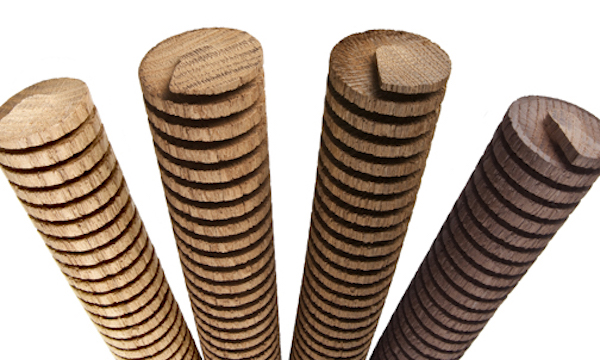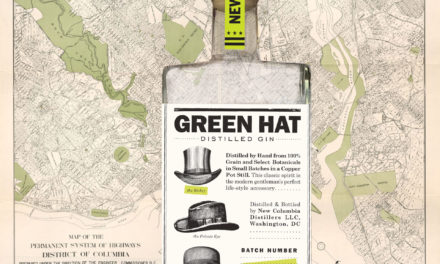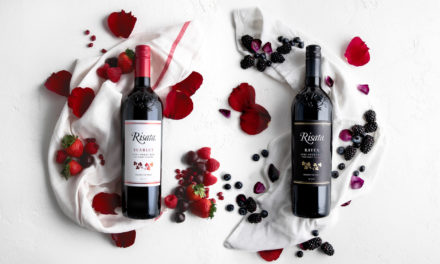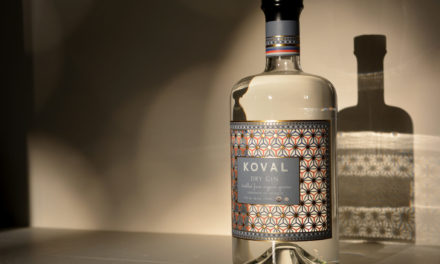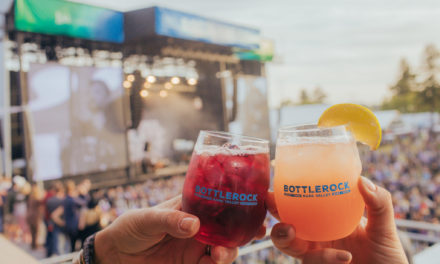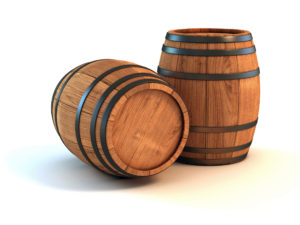 Wooden barrels have a near-mythological history in alcohol production, thanks to their ubiquity in aging, fermenting, and transporting all varieties of wine, cider, beer, and distilled spirits (not to mention maple syrup, coffee, and other comestibles). But barrels also have drawbacks.
Wooden barrels have a near-mythological history in alcohol production, thanks to their ubiquity in aging, fermenting, and transporting all varieties of wine, cider, beer, and distilled spirits (not to mention maple syrup, coffee, and other comestibles). But barrels also have drawbacks.
For one, they’re among the greatest expenses for today’s beverage makers. Expert assessments of current barrel costs vary widely; some put the average cost of a new French oak barrel at roughly $1,100, while others say quality barrels can cost as much as $1,800 each. American and Hungarian oak barrels, which round out the top three most popular choices, aren’t far behind.
The costs associated with barrel use include not only the purchase price, but also their limited lifespan (after only three or four years, a barrel no longer imparts any wood flavor or aroma attributes and is considered “neutral”) and the expenses associated with the space, products, and people needed to house, maintain, wrangle, and clean them. These handling issues become increasingly complex and costly depending on the beverage’s élevage.
Depending on who you ask, there’s a lengthy list of challenges associated with using traditional barrels that tip the argument in favor of using wood alternatives. Continuing to use barrels throughout the beverage-making process doesn’t pencil out, say barrel alternative suppliers—especially when there are options that maximize both production and profits.
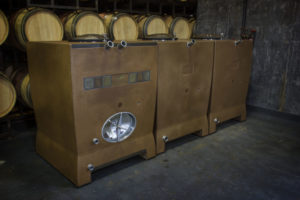
Sonoma Cast Stone’s NuBarrel significantly decreases evaporative losses when compared top traditional barrels. [Photo courtesy Sonoma Cast Stone]
Aging in barrels poses myriad challenges. In addition to those issues previously cited, evaporation is another costly loss, says Steve Rosenblatt of Sonoma Cast Stone. Evaporative losses for products in conventional wooden barrels are typically between 7 to 10 percent, compared to concrete evaporative losses of roughly 0.001 percent, he says.
“For a big winery, that’s hundreds of thousands of dollars,” he says. “The economics are overwhelming.” A winery producing 70,000 cases per year, he claims, can save well over $1 million per year by converting to his company’s NuBarrel technology, a square concrete vessel into which wood staves can be immersed.
For producers making mass-market beverages—wines that retail for $20 per bottle or less, for example—using new barrels also doesn’t make sense, agrees Len Napolitano, sales manager for Oak Infusion Spiral by Avon, Minn.-based Barrel Mill: “The bottom line doesn’t allow for that.” When a wine retails for $20 to $30, it can be a grey area. “You could use a combination of new oak barrels and some oak alternatives,” he says. “It’s not always an either/or. You can use both.”
Numerous Alternatives
Today, any number of barrel alternatives—whether staves, chips, spirals, or cubes—can be used to impart woody flavor elements to alcohol beverages during the aging process. Two overarching product categories are: wood additive products, which can be used in an existing barrel or container, such as concrete or stainless steel; and hybrid barrels, which are production-sized vessels with wooden components, such as a head or submersible stave rack structure.
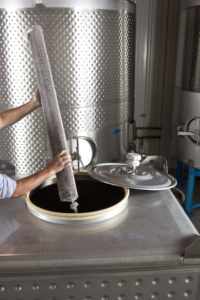
“Cross grain releases oak flavor compounds eight times faster than the parallel grain exposure inside a barrel.” —Len Napolitano, The Barrel Mill
Wood alternatives can impart a similar taste to that a barrel provides while using a fraction of the raw material. As in a barrel, exposing the beverage to wood extracts tannins and vanillins, two notable compounds that interact with the liquid to change its flavor and appearance (as well as alter its mouthfeel). The flavor profile, as with barrels, can further change through toasting or pre-soaking the wood.
The market for alternatives is huge, says Jim Cassidy, who handles sales and research for North Coast Container/VitaCask, headquartered in Cleveland, Ohio. Products such as alternative vessels with wooden heads “provide natural micro-oxygenation, which is an element essential to achieve full maturation,” he says.
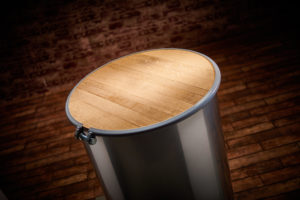
When released, North Coast Container’s VitaCask will provide natural micro-oxygenation and more production flexibility. [Photo courtesy North Coast Container]
Oak barrels have the added advantage of time and tradition, however. Cassidy says most beverage makers know how to use an oak barrel, while wood alternative infusions that can be added to barrels or tanks are a relatively modern technique and, therefore, require a bit of a learning curve to master.
Widening Market Acceptance
Alternative staves have been made for three decades, says Patrick Pickett, technical director, Modern Cooperage, but they and other barrel alternatives have only really made roads into the industry in the last 10 to 15 years, and they’re still continuing to gain popularity and acceptance.

“As a barrel supplier in the current market, it’s almost a necessity to also have an oak alternative option.” —Heather Burton, Barrel Builders
Heather Burton, marketing director for Barrel Builders in St. Helena, Calif., agrees that the technology was once “almost exclusively used by cheaper, lower-quality wine producers.” But now that these products are “leaps and bounds above what they used to be,” she says, they’re becoming more widely used—even if not more widely discussed. (See “Can You Keep a Secret?”)
Most modern cooperages supplement their barrel lines with some sort of alternative. “As a barrel supplier in the current market, it’s almost a necessity to also have an oak alternative option,” says Burton, whose company offers the ButlerCraft oak infusion product line. “It’s been very popular among our clients and is being used for everything from chardonnay to zinfandel with delicious results. Everyone who’s tried it has purchased it again.”

Barrel Builders can supply oak cubes toasted to match any traditional barrel. [Photo courtesy Barrel Builders]
Heidi Korb, owner of Black Swan Cooperage, a whiskey barrel cooperage in Park Rapids, Minn., provides products primarily to brewers and distillers. One of these products is the Honey Comb patented barrel alternative for quickly flavoring and maturing wine, beer, and spirits. The device is sized to fit inside a vessel, from carboys to large tanks, and can be added through the bunghole of a standard barrel.
Hybrid Barrel Products
Growing industry attention is focused on so-called hybrid barrels, which are made from a combination of wood and stainless steel. Cost is also relatively fixed. Apart from the base price of a tank or container (which, unlike barrels, don’t need to be replaced every few years), wood staves can be replaced for $30 to $40 annually—possibly $50 to $70 for the most expensive woods—says Jon Roleder, president/founder of Modern Cooperage, who describes his company’s products as “new concept stainless containers” with dimensions and shapes comparable to barrels. The product fits in existing barrel racks but increases production by 25 percent, he says, helping even space-constrained operations increase their volume.
“The design is made for efficiency and ease of operation,” he continues. The patented design lets production be controlled and sanitary, and fruit can be added directly from the picking bin; liquid can easily fill or be pumped in. Interior stave racks, into which traditional staves can be clipped, provide the wood element. The inclusion of a stirring paddle is one key feature producers are finding attractive, says Roleder. This lets sur lees wines be thoroughly stirred for fuller integration of the lees. Users have full oxygenation control via a membrane made from medical grade silicone.
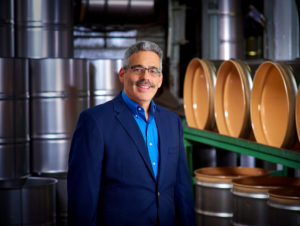
“Artisans relying on used barrels to reduce cost can now get the effects of a new barrel, cheaper.” —Andrew Deutsch, North Coast Container/VitaCask
A similar product—VitaCask—isn’t yet on the market. It’s in the final stages of testing, says Andrew Deutsch, vice president of marketing and business development for North Coast Container/VitaCask, who explains, “We know we don’t get a second chance. We want perfection before we go to market.”
VitaCask will be easy to use, he says, and will let beverage producers create “new, exciting flavors with do-able costs.” Wood or botanical infusions can be used in these vessels without unnecessary complications, such as cleaning between uses, needing access to the liquid through a bunghole alone, or needing to disassemble a wooden barrel to retrieve an infusion source, says Deutsch: “Simply stand up the barrel and remove either head to get access to the inside.” This increased control lets wine producers “add the whisper” of oak, for example.
Optimize a Sub-Optimal Crush
Another benefit associated with hybrid barrels and/or barrel alternatives is that they let producers make the most of juices that don’t meet optimal standards. In a year when the crush quality isn’t great, for example, a decision has to be made: either put the juice in-barrel or sell it on the wholesale market. What’s the tipping point in the cost analysis? Typically, the barrel cost has to be recovered.
With alternatives, a producer doesn’t have the overhead of the barrel, explains Deutsch, so they can still make a tasty product at a lower price point—perhaps under a second label—that consumers will enjoy and appreciate. “We believe our system is going to help make fine wine with significant cost benefits,” he says.
Some suppliers say the availability of hybrid tanks and wood alternatives lets smaller beverage makers experiment without requiring significant overhead, as trials can be made without such considerable investment. Deutsch agrees, saying, “Artisans relying on used barrels to reduce cost can now get the effects of a new barrel, cheaper, when replacement costs and shipping costs are considered.” (See “New Flavor Profiles”)
Another reason smaller, nano- and micro-scale brewers and distillers are using alternatives is that second-hand barrels have been increasingly difficult to source as cross-aged beverages gain in popularity.
Taste: The Final Frontier
Taste is the ultimate test. Some pundits claim they can easily distinguish between beverages that have spent time in-barrel and those merely touched by wood. As more wood alternatives and hybrid vessels are used at production scale and these beverages start winning awards, “doors will open up,” says Cassidy, who expects a market acceptance process similar to that of American oak barrels (in a nutshell, he says, as more people began making wines in American oak—and acknowledging it—the product slowly improved and became more accepted in wine circles, until it’s now seen as just another option).
For now, adds Burton “makers and marketers want to keep the mystique and leave all the ‘other additives’ behind the curtain. I think eventually it will change—but probably not tomorrow.”

